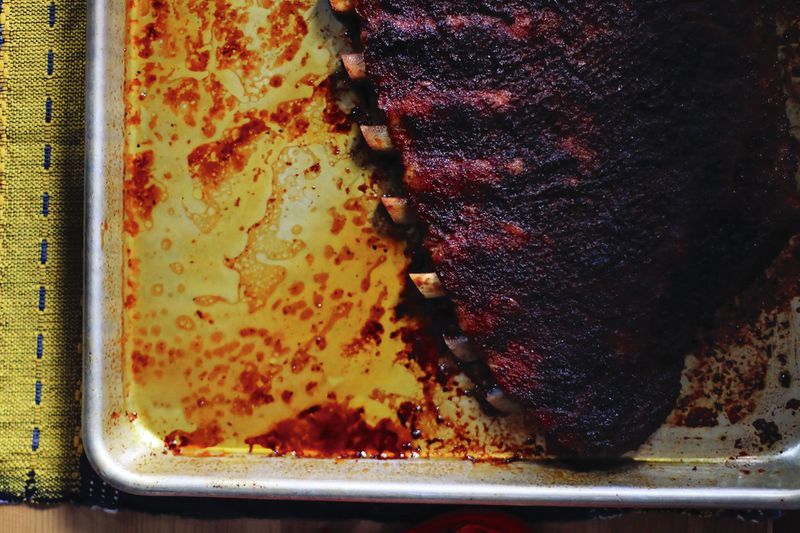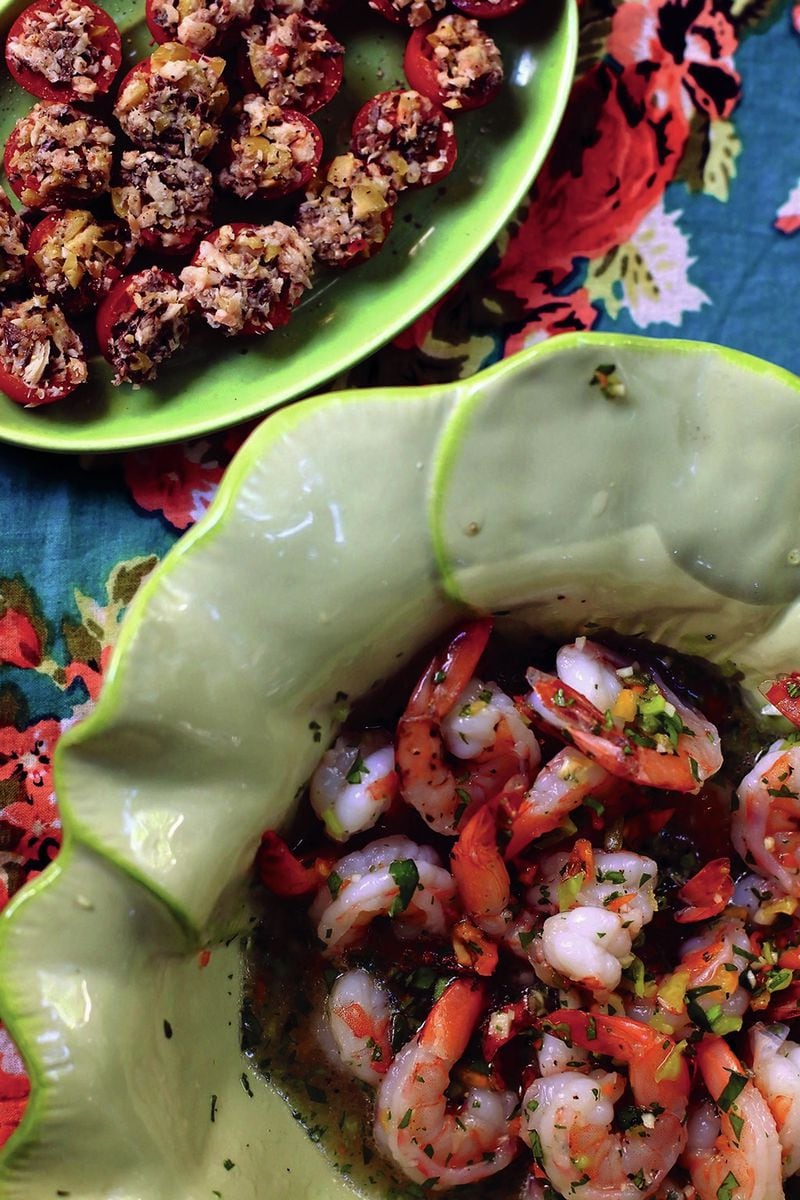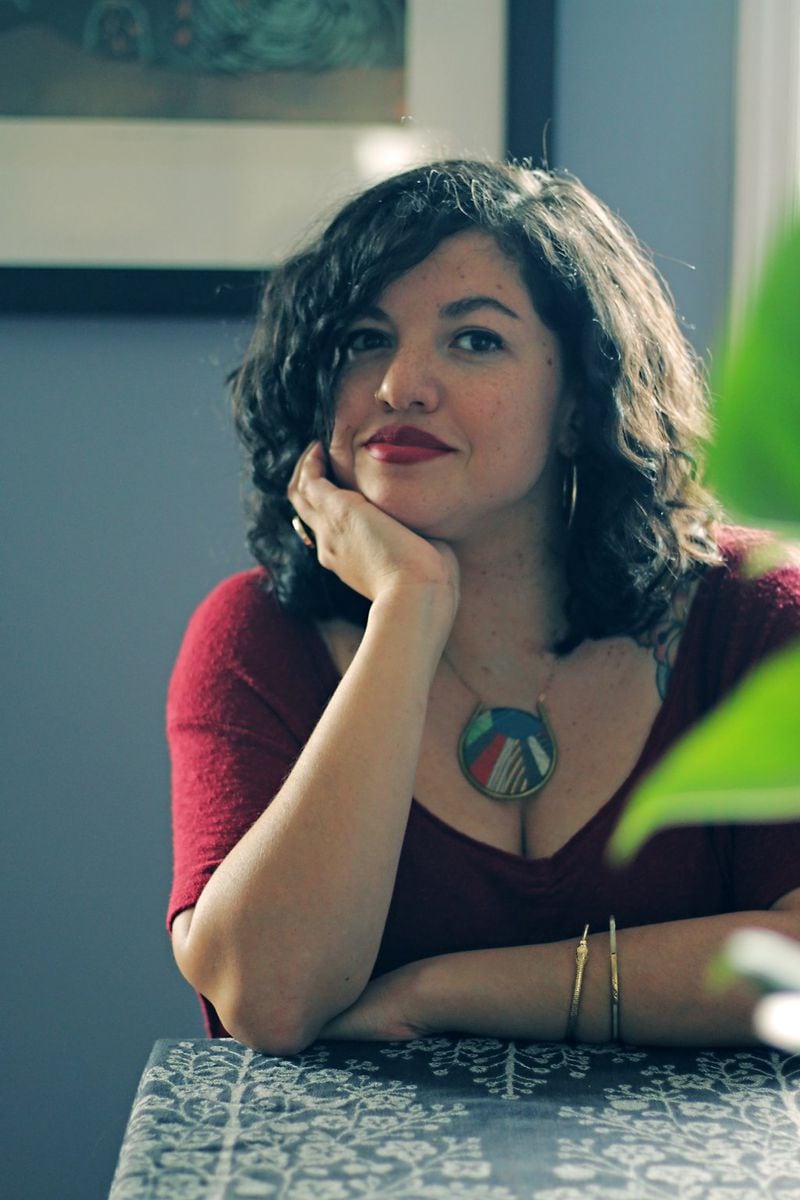When Von Diaz talks about her new book, "Coconuts & Collards: Recipes and Stories From Puerto Rico to the Deep South," she usually describes its genesis as a "Julie & Julia,"-style project in her tiny Brooklyn kitchen.
Diaz decided to cook her way through a copy of her grandmother’s favorite cookbook, “Cocina Criolla.” That volume, by Carmen Aboy Valldejuli, is the kind of kitchen staple a new Puerto Rican bride might have gotten as a wedding gift in the latter half of the 20th century. Diaz documented the whole endeavor in You Tube videos and a video blog four years ago. It also was an homage to her grandmother, whose ability to prepare the kind of foods that so comforted two generations of their family was erased by Alzheimer’s.
But, it is well into “Coconuts and Collards” that we see this book actually began when Diaz was a little girl in a cramped townhouse kitchen in Morrow. For, as much as Diaz’s book is an exploration of the historical and cultural ties that bind Southern and Puerto Rican food, it also is a memoir, a testimony to the power of foodways to hold families together across miles, and strengthen them during their lowest points.
<<RELATED: In Puerto Rico and Cuba, food is a marker of resilience, creativity
“We each have our own story, and we each translate the flavors of our heritage and marry them to the flavors of our home, so this is not just a cookbook, these are love stories,” said Sandra Gutierrez, author of “The New Southern-Latino Table.”
Diaz was born in Rio Piedras, Puerto Rico. When she was still little, the family moved to Fort Gillem, near Atlanta, because her father was in the Army. Once her parents’ marriage failed, she and her mother and little sister found themselves living in Morrow. When a marriage falls apart, and there are children, roles can reverse under the strain. This is especially true if the mother becomes the sole guardian and must provide for the family on an income that barely supports herself. In those situations, kids can take on adult responsibilities for running a household — not simply out of necessity, but also desire.
That’s the position Diaz found herself in 26 years ago, when she was 10 years old. She was in the kitchen many mornings and evenings, trying to keep her family fed. Her mother worked odd hours, and Diaz stepped into the role of part-time caretaker.
As Diaz writes, there always was food, and the children never had any missed-meal cramps. Yet, despite the family recipes Diaz’s mother learned from her own mother back in Puerto Rico, there wasn’t enough money for a varied and well-stocked pantry. Prepared and generic provisions were their staples.
Still, Diaz tried to cook in the manner in which she’d seen her mother prepare meals when times were good, with care, confident improvisation, and flavor, even if the accent was a drop or two of food coloring.
In time, Diaz would return to Puerto Rico during the summers, to stay with her grandmother, who herself had lived in Biloxi, Mississippi, as a child and teenager. Diaz learned in Georgia about Southern staples like grits, but, on the island, she learned how essential sofrito is to the Puerto Rican table. If collards were the evergreen presence on tables in Morrow, culantro chimichurri always was present on her grandmother’s table in Altamesa.
“I understood my people, my culture, my island, by looking at the food itself,” Diaz said.
In the same way, after graduating from Agnes Scott College in Decatur, she gained a deeper understanding of Southern food when she worked as a host at Watershed Restaurant during its heyday in downtown Decatur. Scott Peacock was chef. Steven Satterfield was sous chef. And, though dementia was overtaking her, Edna Lewis, the grand dame of Southern cooking, was still alive and under Peacock’s care.
Diaz worked in the restaurant on fried chicken night, and during weekend brunch. That’s where she learned the true complexity of Southern food.
“I had the privilege over time of being in community with some really great food people who also challenged the assumptions that I was making about Southern food,” Diaz said. “It was a very formative experience. It was like, I’ve seen how bad Southern food can be, but now I see how good it can be. I’ve seen how heavy Puerto Rican food can be, how unhealthy it can be, but now let me see how it can be different.”
It also was at Watershed that she began to see “natural parallels” between the food of her grandmother and the food of her childhood home. Much of that had to do with the African influence brought to both regions through the transatlantic slave trade. Sugar cane was the cash crop in Puerto Rico, and enslaved Africans tended it from shoot to syrup. Cotton and rice were economic staples in the lower South. It was body-rending work that required, if not a balanced diet, one that was filling and heavy.
“Despite being a tropical island, where you would assume people are eating fresh seafood and fresh fruits and vegetables all the time,” Diaz said, “from the research I’ve done, the foods that became sustenance, that were cultivated on the island en masse, were cultivated to keep people fed, not to nourish them; scraps of meat, heavy starches. This kind of subsistence eating is common in places where labor was the primary employment.”
It wasn’t until her grandmother became ill several years later that Diaz began to study those commonalities in earnest. When she’d cook some recipes from “Cocina Criolla,” she was confronted by the liberal use of lard, which also was present in some forms of Southern cooking.
“As I started to dig into these traditions, I had questions like, ‘Why is my people’s food so heavy?’” Diaz said.
Gutierrez, a pioneer in the intersection of Latino and Southern foodways, said that, from the American South down through South America, where indigenous, African and European cultures collided for centuries, the same culinary roots are shared, based on similar ingredients and techniques: rice, field peas, beans, pork, citrus, squash, nuts, peppers.
The commonalities that Diaz saw were manifestations of the ways each region or country interpreted those things, Gutierrez said.
“Many dishes are similar, if not identical,” she said. “For example, rice and beans. You find that in Colombia, Puerto Rico, Nicaragua, Cuba and here. So, when you get a Latin American with a Southerner at the table, you’ll find commonalities.”
Diaz amplifies those ties in her book, so there’s a recipe for grits made with coconut milk, and for barbecue sauce made with a base of guava juice.
“My book reflects an actual journey through exploring and reimagining food culture,” Diaz said.
There also is a recipe for one of the last meals Diaz cooked with her grandmother, chicharron de pollo, or fried chicken nuggets. Along with her grandmother’s well-worn copy of “Cocina Criolla,” Diaz has her grandmother’s jibarito press for flattening plantains, and a lime press. In the head notes for the recipe, she describes how she helped her grandmother squeeze the juice from the fruit.
Together, they made a meal that was an expression of love and identity.
"Coconuts & Collards: Recipes and Stories From Puerto Rico to the Deep South" by Von Diaz. University Press of Florida, 2018. $28.
RELATED:
Read more stories like this by liking Atlanta Restaurant Scene on Facebook, following @ATLDiningNews on Twitter and @ajcdining on Instagram.










